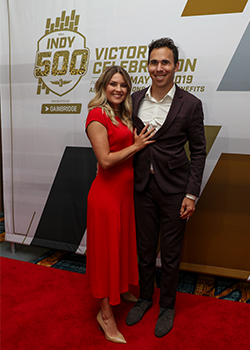It’s been 34 days since cars fired for the first practice of the INDYCAR Grand Prix at Indianapolis Motor Speedway, beginning a run of five consecutive weekends of on-track activity. During that span, nearly one-third of the possible driver points for the 17-race NTT IndyCar Series season were available and taken.
It’s an exhausting span in which titles are won and lost, careers enhanced, contracts reconsidered and money won and lost. As it has been in recent years, the Indy GP/Indy 500/Detroit doubleheader/Texas stretch had some notable moments. There were these:
- Simon Pagenaud swept the Indy events, making Norman Pagenaud the most famous dog in motorsports.
- Josef Newgarden re-established himself as the championship leader by following a rousing win at Detroit with a rousing win at Texas.
- Scott Dixon got himself back into it by winning the second race at Detroit, then apologized for an uncharacteristic mistake at Texas.
- Takuma Sato rallied for a podium finish at Indy and the pole at Texas, moving into the top five in points along the way.
- Alexander Rossi finished second in three of the five races, proving he’s the most entertaining racer in the series, especially when angry.
One could argue any of those five as noteworthy enough to be the highlight of the previous 34 days, but they’d be outvoted by this:
And this:
And this:
Robert Wickens’ return to Indianapolis to assist his Arrow Schmidt Motorsports team wasn’t just good for him, it was good for everyone who knows his story. It is cathartic while inspiring, proving that anything is possible through will and determination. And Wickens has graciously invited us to be a part of his long trek through rehabilitation from the injuries he sustained in a crash last year.
 With wit and dignity, Wickens shows the struggle and the possibilities that come from it. Everyone can relate to that; everyone can benefit from it. It’s not always a devastating physical setback, either. It can be unspeakable loss, devastating heartbreak or an immense challenge we never thought we’d have to face. All of us go through something we didn’t think we could make it through, but we can emerge from the other side stronger and better because of it.
With wit and dignity, Wickens shows the struggle and the possibilities that come from it. Everyone can relate to that; everyone can benefit from it. It’s not always a devastating physical setback, either. It can be unspeakable loss, devastating heartbreak or an immense challenge we never thought we’d have to face. All of us go through something we didn’t think we could make it through, but we can emerge from the other side stronger and better because of it.
What Wickens has done for us is immeasurable. It’s vulnerable, deeply authentic and moving. It’s a circuitous journey, too. By sharing it, he sends out hope that comes back to him. He is as much our inspiration as he is his own. The fact that he was steadfast in his determination to stand for his red-carpet photo with fiancée Karli Woods at the Indy 500 Victory Celebration was another shining example.
One of Robert Frost’s most quoted lines – “the best way out is always through” – comes from a 1915 poem entitled “A Servant to Servants.” It’s the story of a woman, exhausted by never-ending labor, of dreams lost, and of an imprisoning mental illness.
The best way out of a struggle is through it, and sometimes through involves sharing it with strangers, making them feel as if they are part of the struggle. That sharing requires a brave honesty. It requires something many of us don’t think we have, but we do. Wickens has shown us that.
He has taken the breath out of us. By doing so, he has put breath back into us.